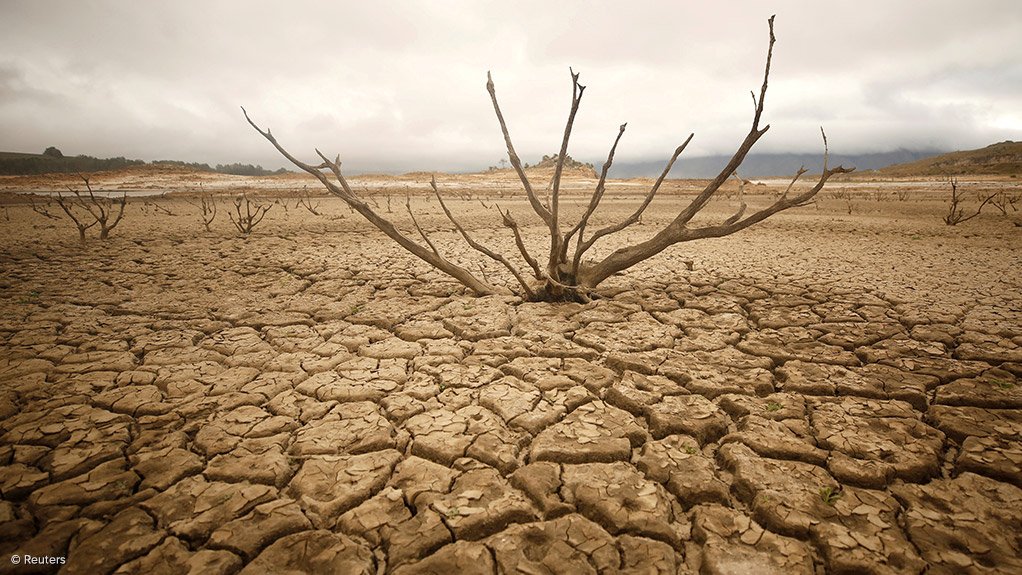The United Nations Environment Programme (UNEP) is warning that current levels of climate adaptation finance are woefully inadequate to support the planning and projects needed to limit the social and economic damage that will arise as a result of intensifying climate change.
Distinct from mitigation actions, which seek to reduce greenhouse-gas emissions, adaptation actions seek to adjust to actual or expected climate effects.
The agency’s ‘Adaptation Gap Report 2020’, released on January 14, warns that the Covid-19 crisis has already led to adaptation falling down the political agenda and it is likely to aggravate the finance gap by constraining public finances at both national and international levels.
UNEP executive director Inger Andersen says that adaptation finance currently comprises only 5%, or $30-billion, and is falling well short of both the need and commitments made as part of the Paris Climate Agreement to strike a funding balance between adaptation and mitigation.
Yearly adaptation costs in developing countries alone are currently estimated at $70-billion and are expected to rised to between $140-billion and $300-billion in 2030 and to between $280-billion and $500-billion in 2050.
The benefits, the UNEP avers, of investing in adaptation are projected to significantly outweigh the costs.
Quoting the Global Commission on Adaptation, the report estimates that a $1.8-trillion investment in areas such as early warning systems, climate-resilient infrastructure, improved dryland agriculture, global mangrove protection and resilient water resources could generate $7.1-trillion of avoided costs and nonmonetary social and environmental benefits.
The UNEP acknowledges that climate adaptation is now widely embedded in policy and planning across the world, but says additional finance is critical to enhance adaptation planning and implementation and limit climate damage, particularly in developing countries.
The Green Climate Fund’s decision to allocate 40% of its total portfolio to adaptation is highlighted as a positive development for galvanising additional resources. Nevertheless, the report urges a significant scaling up and incentivising for both public and private adaptation finance to narrow the gap.
New tools, such as sustainability investment criteria, climate-related disclosure principles and mainstreaming of climate-related risks into investment decisions, could help stimulate climate-resilient investments and direct finance away from investments that increase vulnerability.
If implemented well, Covid-19 stimulus packages could also lead to a more climate-resilient and low-emission recovery. However, a UNEP analysis of the economic stimulus packages announced to date indicates that most of these are not taking advantage of this opportunity.
The report strongly reinforces the importance of greenhouse-gas mitigation, noting that robust mitigation action would significantly reduce unavoidable damage costs, particularly in Africa and Asia, which will bear the brunt of future adaptation impacts.
“According to recent literature, a 2°C trajectory may be able to limit annual global growth depression to between 1% and 1.6% when compared with a 3 °C trajectory with annual losses in the range of 1.5% to 2.2% of global world product.”
Based on current pledges under the Paris Climate Agreement, the world is heading for at least a 3 °C temperature rise this century.
Country commitments are expected to be enhanced, however, at the upcoming climate negotiations, which are scheduled to take place in Glasgow, Scotland, in November. The aim is to ensure that temperatures remain below 2 °C above pre-industrial levels, but there is growing pressure to reduce that rise to 1.5 °C.
The World Meteorological Organization reported in December that the average global temperature in 2020 was about 1.2 °C above the pre-industrial level (1850-1900) and declared the 2011 to 2020 decade as the warmest decade on record.
The UNEP notes that, in 2020, 50-million people were affected directly by flood, droughts and storms, while Australia, Russia and the US experienced raging wildfires and East Africa was afflicted by locust swarms, fuelled by high rainfall.
EMAIL THIS ARTICLE SAVE THIS ARTICLE ARTICLE ENQUIRY
To subscribe email subscriptions@creamermedia.co.za or click here
To advertise email advertising@creamermedia.co.za or click here











